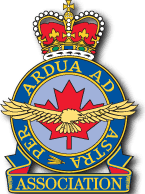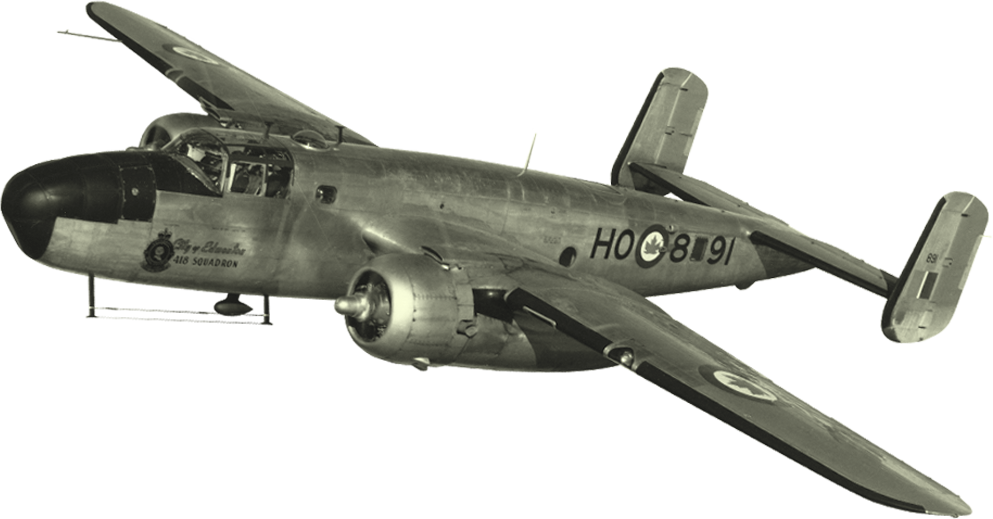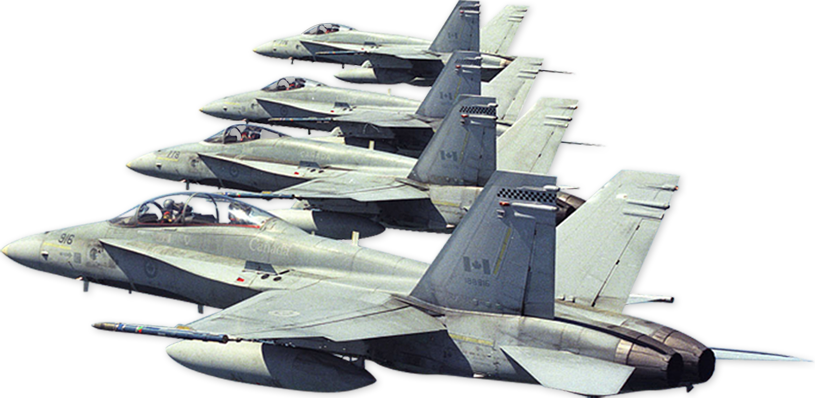DYER,
John Philip
Flying Officer,
No.99 Squadron,
39073
Distinguished Flying Cross
RAF WWII
Description (click to view)
DYER, F/O John Philip (39073) - Distinguished Flying Cross - No.99 Squadron - awarded as per London Gazette dated 31 May 1940. Born in Minnedosa, Manitoba, 1913; educated there; DHist file 181.005 D.270 listed him as Canadian in the RAF (next-of-kin in Minnedosa); obtained Short Service Commission as Acting Pilot Officer on Probation, 24 August 1936; to RAF Depot, Uxbridge, 24 August 1936; to No.6 FTS, Netheravon, 19 September 1936. Killed in action, 21/22 May 1940. No citation other than 'for gallantry and devotion to duty in the execution of air operations'. DHist file 181.005 D.270 confirms him as a Canadian in the RAF. Specifically listed in AFRO 1292/41 dated 7 November 1941 as a Canadian in the RAF who had been decorated as of that date. Air Ministry Bulletin 801 refers. Public Records Office Air 2/9413 has recommendation by W/G J.G. Griffith dated 23 April 1940:
This officer has displayed exceptional courage and devotion to duty whilst flying on active operations against the enemy over a period of 7 ? months. He has displayed complete calm when subjected to intense enemy fire on several occasions and has participated in practically every operation in which this unit has taken part since the commencement of hostilities.
I cannot speak too highly of this officer, and I strongly recommend that his most valuable services are deserving of suitable recognition.
The station commander adds:
Forwarded and strongly recommended. This officer has taken part in no less than ten raids since the declaration of war.
On 28 April 1940 the Air Officer Commanding, No.3 Group adds (in detail surprising for this level of award screening):
I concur in the above recommendation, and the coolness which is habitually displayed by this officer was again demonstrated when, in the raid of April 17th, he received an anti-aircraft shell through his starboard wing which did consider?able damage to the petrol tanks of his aircraft. Although these were the self-sealing type, the pilot realized that the damage was extensive and that leakage would be bound to occur. He at once switched both engines over onto the damaged tanks in order to make certain of utilizing as much of this petrol as possible, and thereby made certain of successfully regaining his base.
Public Records Office Air 2/9413 also has recommended citation as processed by Air Ministry Honours and Awards Committee:
This officer has displayed exceptional courage and devotion to duty whilst flying in active operations against the enemy and complete calm when subjected to intense enemy fire on several occasions. He has participated in practically every operation in which his unit has taken part since the commencement of hostilities. On one occasion, when damage was caused to his petrol tanks by an antiaircraft shell and leakage was bound to occur, he at once switched both engines over to the damaged tanks in order to utilize as much of their petrol as possible, and thereby ensured the safe return of the aircraft.
DYER,
Charles Grant Reynolds
Pilot Officer,
No.10 EFTS,
C36584
Air Force Cross
RCAF Personnel Awards 1939-1949
Description (click to view)
DYER, P/O (now F/O) Charles Grant Reynolds (C36584) - Air Force Cross - No.10 EFTS - Award effective 8 June 1944 as per London Gazette of that date and AFRO 1380/44 dated 30 June 1944. Born 15 April 1920 at Alvinson (near Sarnia, Ontario); educated in Toronto; home there. Enlisted in Toronto, 9 May 1941 as Elementary Flying Instructor; granted rank of Sergeant, 7 August 1941. To No.10 EFTS, 6 August 1941. Classified as Service Pilot and promoted Warrant Officer, 1 December 1942. Commissioned 30 December 1942 (still with No.10 EFTS). Promoted Flying Officer, 30 June 1943. Promoted Flight Lieutenant, 1 June 1944. To Release Centre, 9 April 1945. Placed on Class \"E\" Reserve, 12 April 1945, from which he was finally removed, 27 October 1947. Reported to have flown 2,175 hours, 1,966 hours as instructor, 332 hours in past six months. Award presented 17 June 1945. Died 11 November 2006 in Orillia, Ontario as per Royal Canadian Legion ?Last Post? website and Legion Magazine of May/June 2007. Medals and logbook displayed at RCAF Memorial Museum, Trenton, Ontario.
This officer has been employed on flying instructional work for two and a half years and has at all times executed his duties with untiring efforts and the highest degree of proficiency. He has proved himself to be a most efficient officer and has set an admirable example to instructors and pupils alike.
DYER,
Hugh Richard Ford
Squadron Leader,
No.419 Squadron,
J5699
Distinguished Flying Cross- Officer, Order of the British Empire
RCAF Personnel Awards 1939-1949
Description (click to view)
DYER, S/L Hugh Richard Ford (J5699) - Distinguished Flying Cross - No.419 Squadron - Award effective 19 May 1944 as per London Gazette of that date and AFRO 1296/44 dated 16 June 1944. Born 15 July 1914 in Minnedosa, Manitoba; educated there, 1921-1931. Home there. Bank teller for Royal Bank of Canada, Minnedosa, Clanwilliam, Wawanesa, Crystal City, La Rivieres and Brandon (Manitoba) and Nipigon, Tillsonburg, Waterloo and Toronto (Ontario). Enlisted in Toronto, 3 September 1940. To No.1 ITS, Toronto, 22 December 1940; graduated and promoted LAC, 27 January 1941 when posted to No.12 EFTS, Goderrich; graduated 28 March 1941 and posted to No.1 Manning Depot, Toronto; to No. 5 SFTS, Brantford, 10 April 1941; graduated and promoted Sergeant, 16 June 1941. Commissioned 22 June 1941. To Station Trenton, 29 June 1941 for course at Central Flying School; to No.10 SFTS, Dauphin, 16 September 1941; to "Y" Depot, Halifax, 29 December 1942; to UK, 25 January 1943; to No.15 (P) AFU, 23 February 1943; to No.23 OTU, 20 April 1943; to No.1659 Conversion Unit, 2 July 1943; to No.419 Squadron, 25 July 1943 (repostings to No.419 Squadron recorded on 1 September and 11 October 1943). Promoted Squadron Leader, 11 October 1943. To command No.1695 Bomber Defense Training Flight, 12 May 1944. Invested at Buckingham Palace, 11 August 1944. Appointed Chief Flying Instructor, No.1659 Heavy Conversion Unit, 8 August 1944 (promoted Wing Commander); appointed Base Training Inspector, No.61 Base, 27 September 1944. Repatriated to Canada 18 June 1945 for "Tiger Force" preparations; released 7 September 1945. His OBE later sent by registered mail. Died in Sidney, British Columbia, 30 September 1996. RCAF photo PL-22368 (ex UK-6065 dated 11 November 1943) shown inspecting art work in a dispersal hut used by groundcrew, with Corporal A.G. Richardson of Vancouver. RCAF photo PL-31195 (ex UK-12739 dated 20 July 1944 is captioned as follows: “Squadron Leader Hugh Dyer, DFC, Minnedosa, Manitoba, has charge of fighter affiliation drogue towing flights at a training unit of RCAF Bomber Group overseas. The flights consist of Hurricanes, for day fighting, good for night, and of Martinets which tow drogue targets for bomber gunners to sharpen their shooting. The Hurricanes put bomber pilots through their paces in mock aerial combat. S/L Dyer is an operational veteran of the famous Moose Squadron, having completed one tour.” RCAF photo PL-32562 (ex UK-13650 dated 28 August 1944) shows him. // This officer has completed a large number of sorties, most of which have been against such well defended targets as Berlin, Nuremburg, Mannheim and Hanover. His ability and determination have always been apparent and have earned him much success. He is a model captain whose personal example has contributed in a large way to the high standard of morale and efficiency of his flight. // DYER, W/C Hugh Richard Ford, DFC (J5699) - Officer, Order of the British Empire - Station Topcliffe - Award effective 1 January 1946 as per London Gazette of that date and AFRO 155/46 dated 15 February 1946. No citation. However, the following comments by superiors are relevant: // 25 September 1944, G/C J..G. Kerr (Commanding Officer, Station Topcliffe): "Has been employed as Chief Instructor of a Heavy Conversion Unit for one month only but has shown himself to be a very capable officer" // 21 April 1945, G//C J.G. Kerr: "Has readily adapted himself to a training job and has used his operational experience to good advantage in this work. An outstanding young officer, very mature for his years. He works quietly and efficiently and has earned the highest respect of all who service with him". // RCAF photo PL-28616 (ex UK-9565 dated 6 April 1944) shows Dyer on right with one of No.419 Squadron’s Lancaster X aircraft and WO Jim McNary (Windsor, a pilot in the unit). The caption to photo PL-31195 (taken 20 July 1944) describes his duties as follows: “Squadron Leader Hugh Dyer, DFC, Minnedosa, Manitoba, has charge of fighter affiliation drogue-towing flights at a training unit of RCAF Bomber Group overseas. The flights consist of Hurricanes, for day fighting, good for night, and Martinets which tow drogue targets for bomber gunners to sharpen their shooting. The Hurricanes put bomber pilots through their paces in mock aerial combat. Squadron Leader Dyer is an operational veteran of the famous Moose Squadron, having completed one tour.” RCAF photo PL-28617 (ex UK-9566 dated 6 April 1944) is captioned as follows: “Members of the RCAF Bomber Group’s most famous unit, the Moose Squadron, admire the first Canadian-built Lancaster to be assigned to them for operational use. It is the ‘Ruhr Express’ which has already logged two flights over enemy territory, and has been assigned to the Moosemen for operational use. Looking at it on an English aerodrome are (left to right), F/L Lloyd Boe (Manville, Alberta), Warrant Officer Jack McNary (Windsor, Ontario), Squadron Leader Hugh Dyer (Minnedosa, Manitoba), F/L J.D. ‘Jimmy’ Virtue (Toronto).” RCAF photo PL-31195 (ex UK-12739 dated 20 July 1944) is captioned as follows: “Squadron Leader Hugh Dyer, DFC of Minnedosa, Manitoba, has charge of fighter affiliation drogue-towing flights at a training unit of RCAF Bomber Group overseas. The flights consist of Hurricanes for day fighting, good for night, and of Martinets which tow drogue targets for bomber gunners to sharpen their shooting. The Hurricanes put bomber pilots through their paces in mock aerial combat.” RCAF photo PL-40339 (ex UK-17121 dated 2 December 1944) taken as he married Corporal Sally Brooker of Schumacher, Ontario (daughter of F/L and Mrs. E.A. Brooker). RCAF photo PL-40340 (ex UK-17122 dated 2 December 1944 shows him as a Wing Commander, taken at his wedding, with his sister (Lieutenant Nursing Sister B. Dyer) and brother (Lieutenant David Dyer, RCN). // Notes: Accident, 28 July 1941, Central Flying School, Fleet 4419. Turning into wind in preparation for take-off when a gust of wind hit and turned the aircraft over on its back. // Application for Operational Wing dated 8 May 1944 stated he had flown 34 sorties (225 hours 25 minutes), 25 July 1943 to 27 April 1944. // Assessments: “A quiet, self-retiring officer who has been doing his work in a capable manner” (F/L B.C.Andrew, No.10 SFTS, 15 December 1941). // Assessed 18 April 1942 when at No.10 SFTS. By then he had flown 59 hours 55 minutes single engine solo, 76.25 single engine dual, 573.35 twin engine solo and 67.10 twin engine dual. Has flown 520.25 instructing. Tested on Crane aircraft. Assessed under following headings - Sequence (Average), Voice (Clear), Manner (Pleasant), Ability to Impart Knowledge (High Average), Ability as Pilot (An average pilot with no outstanding faults), and Remarks (A capable instructor). Rated Category “B” by F/L J. McConnell and S/L A. Shelfoon, CFS Visiting Flight). // “An excellent deputy flight commander.” (S/L G.A. McMurdy, No.419 Squadron, 28 September 1943) // “Possible operational squadron commander calibre. A good General List officer in all respects. Satisfactory as employed but capable of more responsibility.” (W/C D.D. Findlay, No.1695 Bomber Defence Training Flight, 15 July 1944). // “Has been employed as Chief Instructor of a Heavy Conversion Unit for one month only but has shown himself to be a very capable officer. Promotion to the rank of Temporary Squadron Leader recommended.” (G/C J.G. Kerr, Topcliffe, 25 September 1944) // “This officer has readily adapted himself to a training job and has used his operational experience to good advantage in this work. An outstanding young officer - very mature for his years. He works quietly and efficiently and has earned the highest respect of all who serve with him.” (G/C J.G. Kerr, Topcliffe, 21 April 1945) To this is added, “A good operational pilot and a capable supervisor and organiser of training activities.” // Training: Interviewed 8 July 1940 by F/O H.A.S. Molyneux. “This man has had average education - seems intelligent and clean cut - should make good observer.” // Attended No.1 ITS, 23 December 1940 to 27 January 1941. Courses in Mathematics (94/100), Armament, practical and oral (86/100), Visual Link (89/100), Drill (88/100) and Law and Discipline (90/100). Placed 17th in a class of 186. “Excellent pilot material. Keen, alert and cool. Pleasant mannered. Airman should do quite well.” // Attended No.12 EFTS, 28 January to 17 March 1941. Finch II aircraft - 29 hours dual, 35 hours 25 minutes solo. Logged twelve hours in Link. “This man is a careful pilot, suitable for multi-engined aircraft as his instrument flying is somewhat superior to his aerobatics.” Ground courses in Airmanship (182/200), Airframes (88/100), Engines (88/100), Signals, practical (82/100), Theory of Flight (92/100), Air Navigation (180/200) and Armament, oral (162/200). Placed fourth in a class of 24. “Conduct and ability above average in all respects. Made a very good impression at this school.” // Attended No.5 SFTS, 10 April to 21 June 1941. Anson aircraft - 20.35 day dual. 39.00 day solo, 3.25 night dual, 6.35 night solo. Was 17.30 on instruments. Logged 20 hours in Link. “A good average pilot, should do well in this as an operational pilot or instructor. Conduct and discipline good.” (F/L R.M. Christie). Ground courses in Airmanship and Maintenance (170/200), Armament, written (81/100), Armament, practical (77/100), Navigation and Meteorology (178/200), Signal, written (85/100) and Signals, practical (49/50). Placed second in a class of 50. “A pupil of high average ability. Airmanship good.” // Attended Central Flying School, 29 July to 13 September 1941. Flew single engine elementary types (8.35 day dual, 7.30 day solo), single engine advanced type (11.35 day dual, 11,05 day solo, 2.30 night dual, 1.00 night solo) and twin engine advanced type (7.10 day dual, 5.55 day solo, 1.00 night dual, 1.00 night solo). “Above average pilot in all respects. Pleasing manner and possesses a good knowledge of sequence. With experience should make a very good instructor.” (F/L R. Bannock). Ground school courses in Airframes (83/100), Engines (88/100), Airmanship (89/100) and Air Navigation (84/100). “An attentive hard working student.” (F/L W.H.E. Chester). Tested in a Harvard by S/L J.G. Stephenson who assessed him under following headings - Sequence (Above Average), Voice (Clear), Manner (Interesting), Ability to Impart Knowledge (High Average), Ability as Pilot (High Average) and Remarks (A high average pilot whose demonstrations are average. Knowledge of sequence above average). Graded Category “C”.
DYER
Description (click to view)
CHARLES GORDON SGT(FE) 533448 - Royal Air Force. From Yorkshire, England. Killed in Action Mar 12/43 age 23. #78 Squadron (Nemo Non Paratus). Halifax aircraft lost while engaged in operations over enemy-held territory. Six of the crew, not Canadians, missing believed killed. Sergeant Flight Engineer Dyer is buried in the War Cemetery at Uden, Holland.
DYER
Description (click to view)
HAROLD GEORGE FS(AG) R102350. From Lebret, Saskatchewan. Killed in Action Jan 8/43 age 20. #50 Squadron (From Defence To Attack). Target - Duisburg, Germany. Lancaster aircraft #W 4800 was shot down at Dusseldorf, Germany. Six members of the crew, not Canadians, missing believed killed. Flight Sergeant Air Gunner Dyer was buried in the Military Cemetery at Dusseldorf, exhumed, and reinterred in the Reichswald Forest War Cemetery, Kleve, Germany.
DYER
Description (click to view)
JOHN PHILLIP F/O(P) 39093 D.F.C. - Royal Air Force. From Minnedosa, Manitoba. Killed in Action May 21/40 age 27. #99 Squadron (Quisque Tenax). Wellington aircraft lost during operations over enemy-held territory. Sgt J.H. Lawrenson (RAF), LAC C.R. Lovejoy (RAF), AC1 S.C. Ogilvie (RAF), and F/O O.L. Williams (RAF) were also killed. F/O Dyer won his D.F.C. while flying Wellington aircraft with #219 Squadron. In December of 1939 he was raiding the Baltic coast and was attacked by German ME-110 fighter aircraft. Five aircraft of his Squadron were lost and although his aircraft was badly damaged he returned to his airfield. Flying Officer Pilot Dyer is buried in the Communal Cemetery at Belval, Ardennes, Franco.
DYER
Description (click to view)
MAURICE BALLARD F/O(P) J85469. From Sutton, Quebec. Killed in Action Jul 26/44 age 21. #103 Squadron (Noll Me Tangere). Target - Stuttgart, Germany. Please see Warren R.J. for casualty list and flight detail. Flying Officer Pilot Dyer is buried in the Main Cemetery, Orleans, Cher, France.








